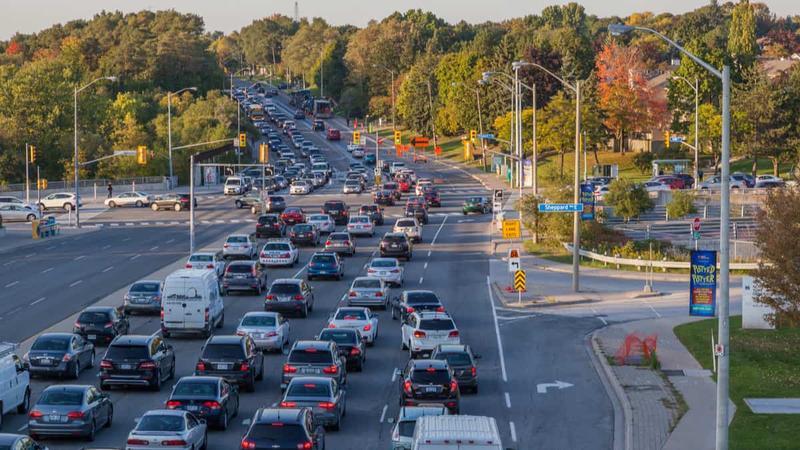To kick off the next phase of the City of Toronto’s congestion management project, Mayor John Tory recently announced further plans to improve traffic flow and safety for motorists, cyclists and pedestrians.
The City plans on making changes to 10 of Toronto’s most congested intersections by using measures like:
- Increasing the length of green lights
- Installation of closed-circuit television cameras
- Retiming traffic signals for pedestrians
- Implementation of left-turn advance green lights and turn restrictions
"The number one priority for Toronto residents is their ability to move around this city quickly and safely," said Mayor John Tory. "Targeting these intersections with common sense solutions is a low-cost, high-impact initiative to get people moving while ensuring public safety."
Toronto’s 10 Busiest Intersections
Tory also unveiled the 10 specific intersections that were identified as congestion hotspots in need of improvement:
- Eglinton Avenue West and Martin Grove Road
- Lawrence Avenue West and Black Creek Drive
- St. Clair Avenue East and Mount Pleasant Avenue
- Finch Avenue and Yonge Street
- Sheppard Avenue and Yonge Street
- Bloor Street East and Parliament Avenue
- O'Connor Drive and Don Mills Road
- Eastern Avenue and Carlaw Avenue
- Finch Avenue East and Victoria Park Avenue
- Kingston Road and Lawrence Avenue East
The City’s Transportation Services used third-party traffic data to identify these hotspots, measuring traffic speed during morning and afternoon rush hour versus free-flow conditions.
Additionally, traffic officers will be positioned at seven major intersections to help direct traffic and pedestrians in hopes of decreasing illegal turns and jaywalking. Monitored intersections include Front and Simcoe streets, Sheppard Avenue and Yonge Street, Bay and Queen streets, Front Street and University Avenue, University Avenue and Adelaide Street and Bay and Bloor streets.
"The presence of officers has led to a reduced number of prohibited turns because people are not as inclined to do the prohibited turn when there is a police officer present and the officers have been better able to manage people going into the intersection too late," Tory told reporters Monday morning as reported by CP24.
Tips to Survive Rush Hour
No matter if you’re driving, walking or biking, traffic in Toronto is a part of life. As unbearable as it may be at times, follow these tips so everyone can make it to their respective destination safe and sound.
Be mindful and take extra caution
During peak hours when traffic is at its heaviest, it’s best to expect the unexpected as motorists, cyclists, and pedestrians alike crowd the streets. Always use your turn signals, accelerate slowly, maintain a steady speed, and constantly check your mirrors and blind spots.
Never drive, walk or cycle distracted
It’s easy to get bored during stop-and-go traffic, but this does not mean it’s time to eat, check your phone or groom yourself. Always stay focused on the task at hand whether you’re driving, cycling or walking. During rush hour, a few seconds of distraction can make a huge difference on your reaction time and can pose a threat to your safety and the safety of those around you.
Stay calm
Rush hour can feel stressful and become a source of anxiety when all you want to do is get to your destination. Make sure you give yourself enough travel time so you don’t feel rushed or pressured to make illegal moves.
Crack down on your auto insurance rate
While the City continues to crack down on traffic congestion, is it time to crack down on what you pay for auto insurance? On average, InsuranceHotline.com shoppers save $700 by comparing rates. Make sure you’re getting the best deal out there, and shop around for your car insurance coverage today.
